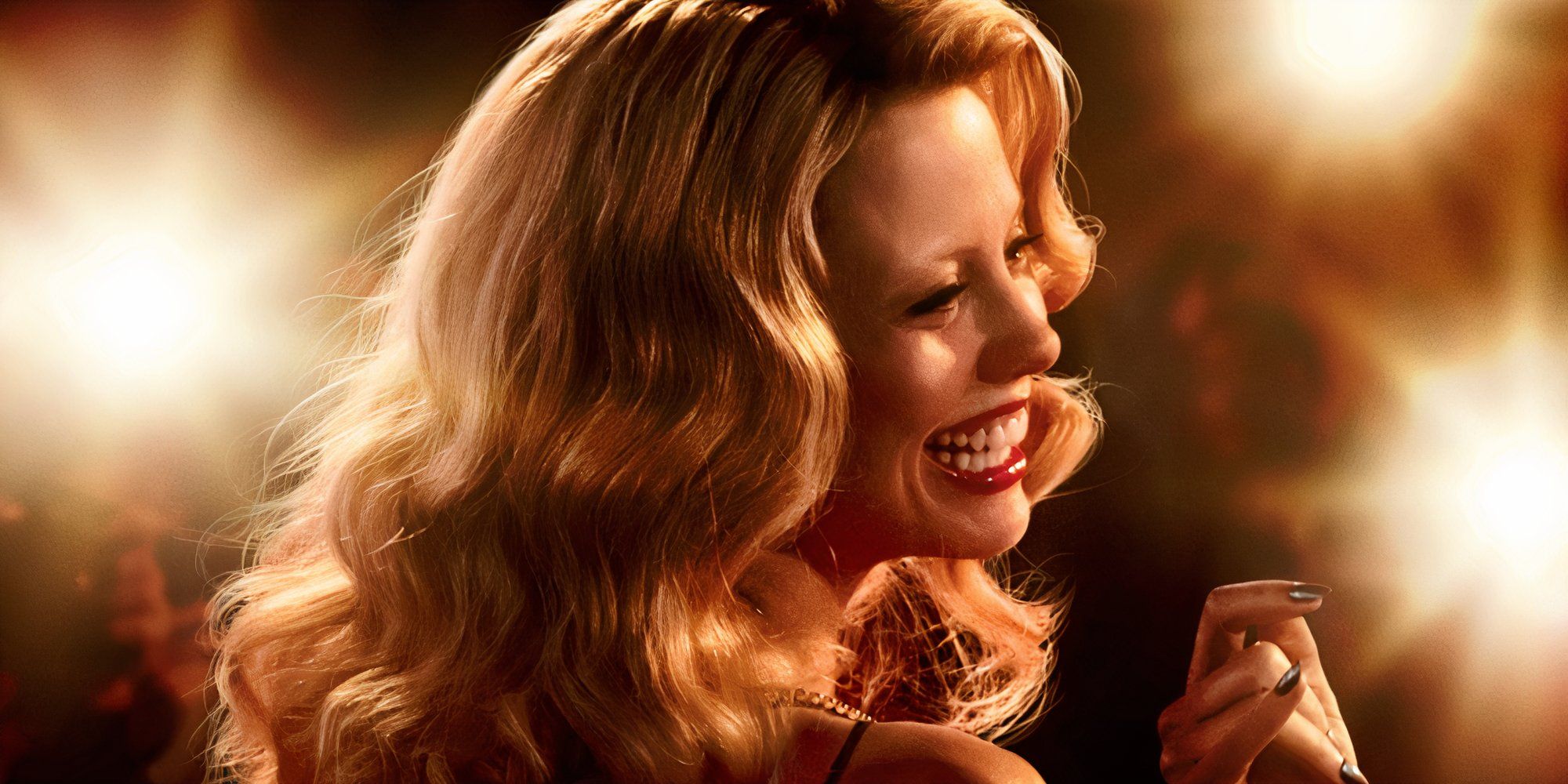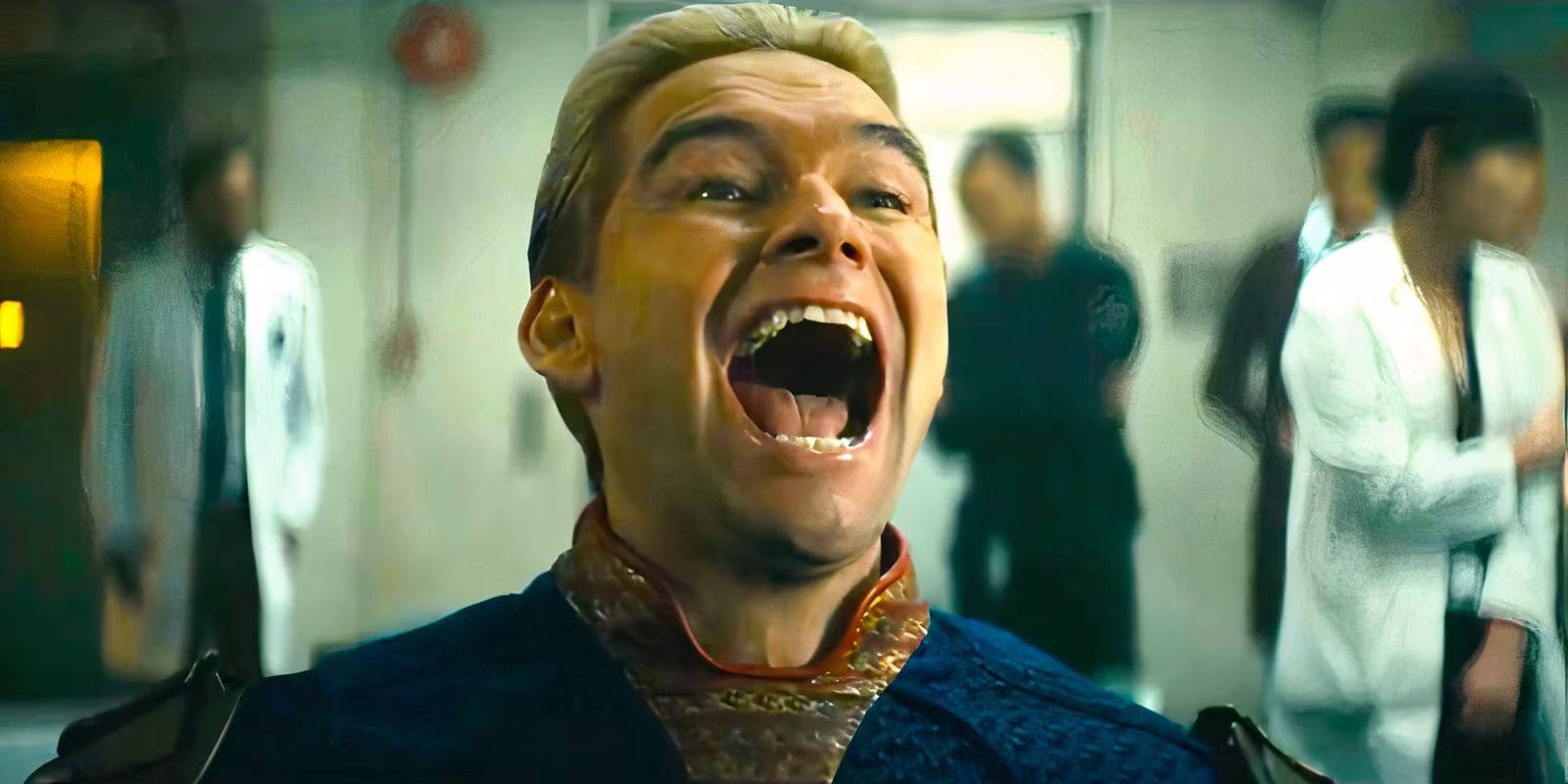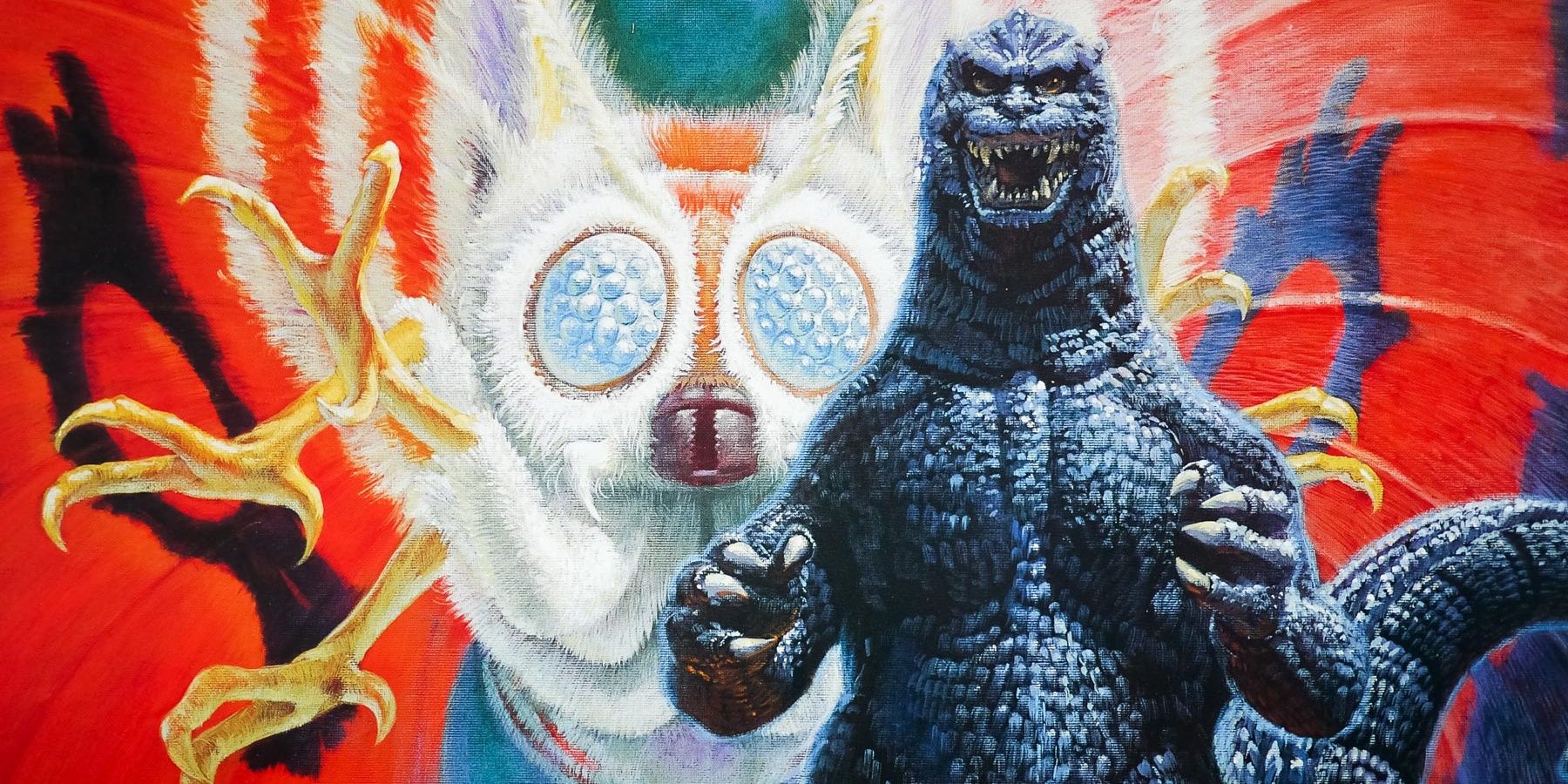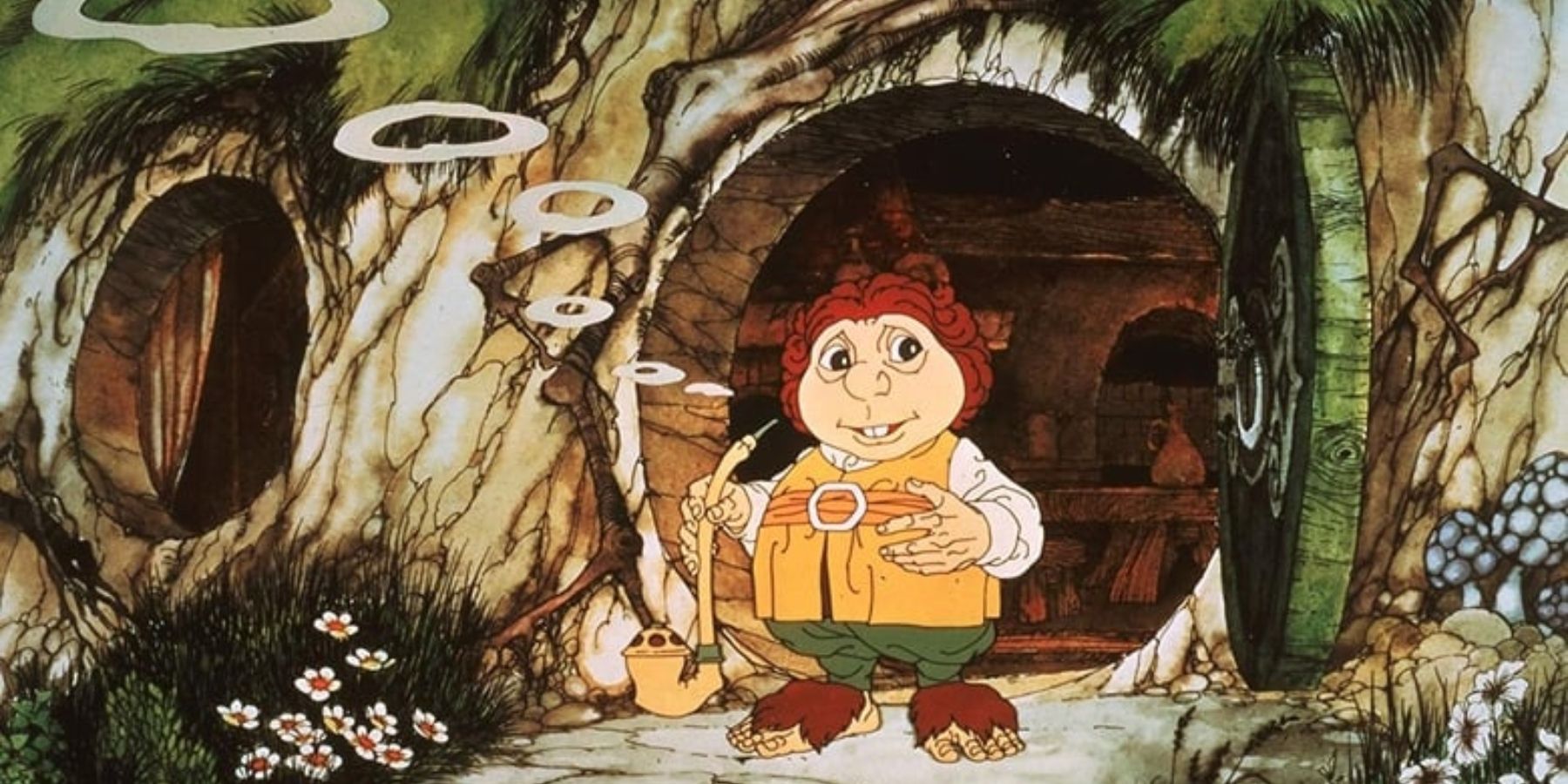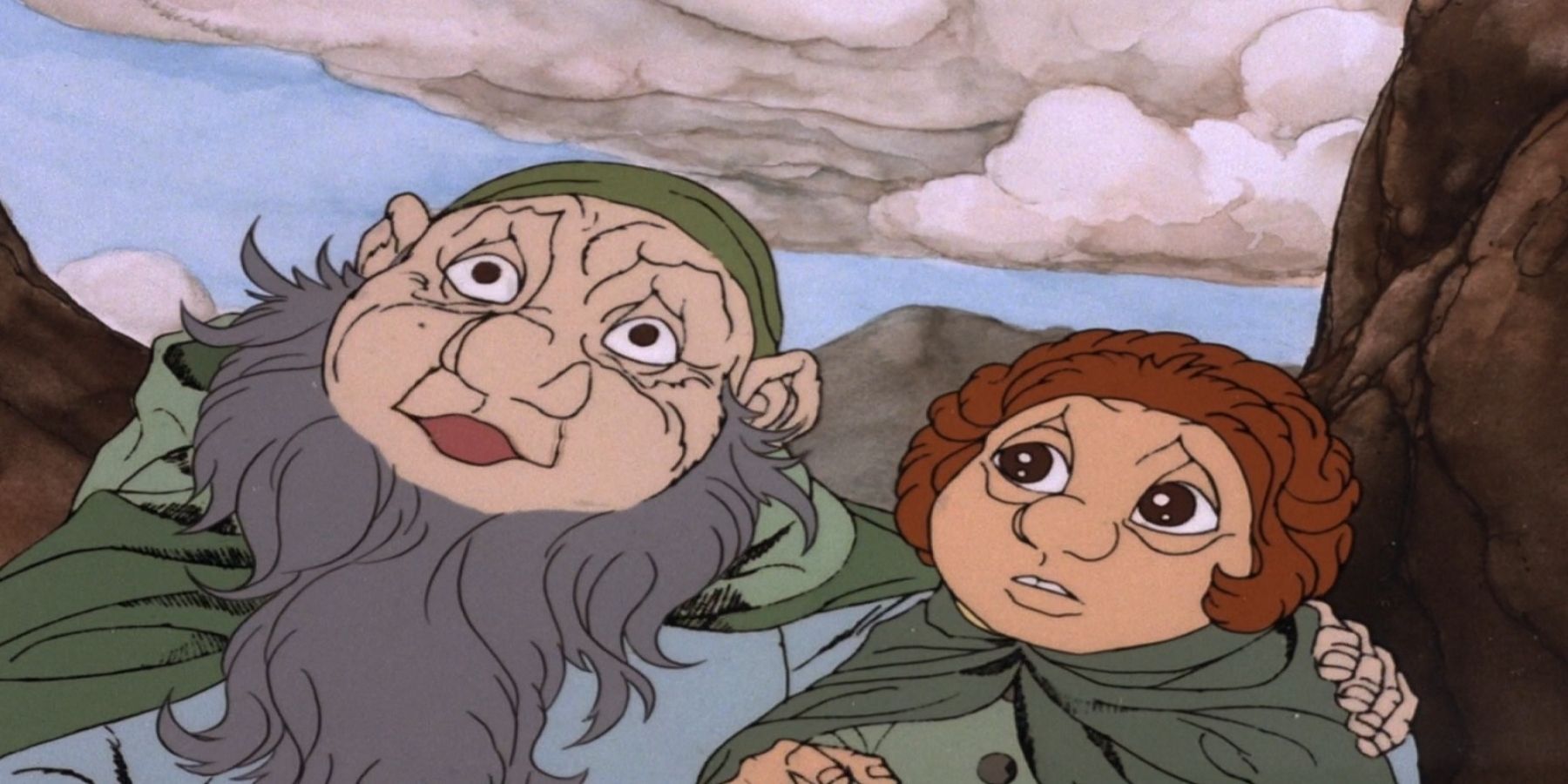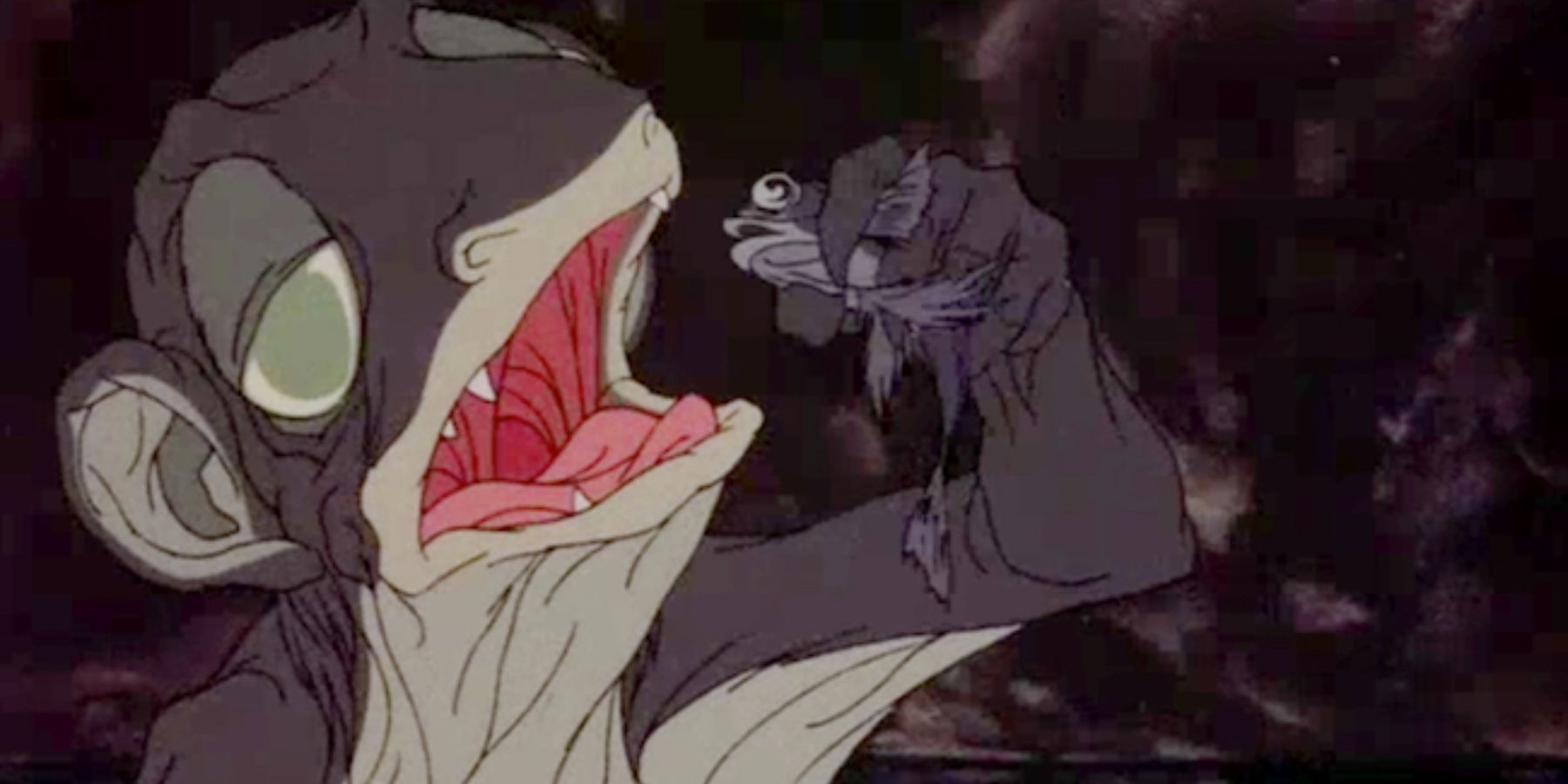Many fans of Tolkien’s universe are eager to consume any new content released that’s set in the world of Middle-earth. However, fans often overlook Rankin/Bass’s The Hobbit film because it’s old, animated, and created to be appropriate for children and families. Though it‘s 44 years old and, as a result, is less flashy than the 2012-2014 films, it does justice to the original story and adds new elements and approaches to the tale. Fans who truly appreciate an opportunity to immerse themselves in Tolkien’s world will likely appreciate several qualities that the film has to offer.
From the time it was being made, doing justice to Tolkien’s The Hobbit was the goal. When Rankin was asked about the film’s story, he claimed that he wouldn’t add anything to the story that wasn't already in the original. He even makes the decision to open the film on a book page-- setting it up like a children’s storybook tale being read to the viewer.
Even the style that the film was animated in was intended to do justice to the original story. It’s the one thing that audiences continually comment on about this film. Whether viewers loved the animation or hated it, it is undeniably one of the factors of this film that stands out to audiences and makes it memorable. Though a lot of effort went into staying true to Tolkien’s telling, as is inevitable with any adaptations, some small differences, aside from animation, were present. The first example of this is when Gandalf appears at Bilbo’s home and comes off as an intimidating and mysterious character. In the book, their meeting is light and playful.
Further, Bilbo himself seems less like a hobbit set in his ways, and more like a naive child in this animated feature, likely to propel the story forward, faster. The biggest difference however is the lack of Beorn’s character. Beorn, the skin-changer that can take the form of a bear, does not appear in this adaptation. This is likely for time’s sake because while his character certainly adds a fantastical element to the story, he’s not completely vital to the greater storyline.
With those details aside, any variations between the book and the animated film are small and in no way take away from the story. In fact, the details of the film that make it appealing to fans of Tolkien’s tales outweigh the details of it that stray from the original. First, what is possibly most appealing about the film is the music that was created for it. The 1977 animated Hobbit film definitely stayed more true to the musicality of Tolkien’s storytelling style-- a significant feature of the book.
In Tolkien’s book, there are often songs woven into the story that express the history of the world or what is happening in the story. The 70s film being accompanied by the music of the books allows it to still deliver this important information in the classic style of the tale but with the benefit of hearing those songs brought to life. It uses the actual lyrics from the books to mirror what happens in the story and add a layer of authenticity to the movie.
Additionally, this film uses brief breakaways to other scenes to explain moments from the past. This is a wise choice for an animated piece because it gives the audience a visual focus while receiving information that’s important to the story. Live action films can rely on an actor’s facial expressions and interactions with other characters to convey the importance of information from the past but animated films work differently.
The animated Hobbit, especially having been made in the ’70s, couldn’t rely on the animation quality to capture the severity of information just through the characters. The incorporation of images of places and things that represent what’s being said, rather than people, gives a clearer and more entertaining idea of the story being told-- again, much like being read a storybook.
There’s also the fact that the 2012-2014 Hobbit films are broken up into three films, making them a bigger time commitment than the animated adaptation. The animated film lasts around an hour and a half, making it a better option for fans that have busy schedules. As a result, it also has a much quicker pacing than the 2012-2014 Hobbit films. The Hobbit book had a much snappier pacing than the trilogy books and this film stays true to that. It doesn’t have stagnant parts.
It’s important to note that this is definitely a much more kid-friendly telling of the classic tale than the 2012-2014 films. This makes it a fantastic watch for families and a sentimental watch for fans of Tolkien's universe. However, viewers that have no prior knowledge of the storyline may not be able to fully invest their interest, given that it is simplified for children. The kid-friendly component of the story is most obvious in how the violence/fighting is handled; it doesn’t show much and there’s certainly no gore.
Also, it definitely shines a less flattering light on particular characters but the significance of this is that it offers the audience a new perspective of these characters and their role in the grander story of the world and the theme of the stories. It emphasizes the darkness of these characters, despite being an animated kids' film.
All of these things considered, it is a very different approach to adapting the tale than the 2012-2014 Hobbit films took, but that’s what gives it so much to offer fans. It is the first cinematic attempt to tell this story and that alone makes it worth watching. Beyond that, it left viewers of that time anticipating more opportunities to experience this world, paving the way for the Lord of the Rings films of the 2000s and the 2012-2014 Hobbit films. Fans of Peter Jackson’s films may not enjoy the same elements in this film but they’re sure to find new things to appreciate about its telling. For being an animated feature, it truly brings to life Tolkien’s tale and leaves audiences eager for more.

